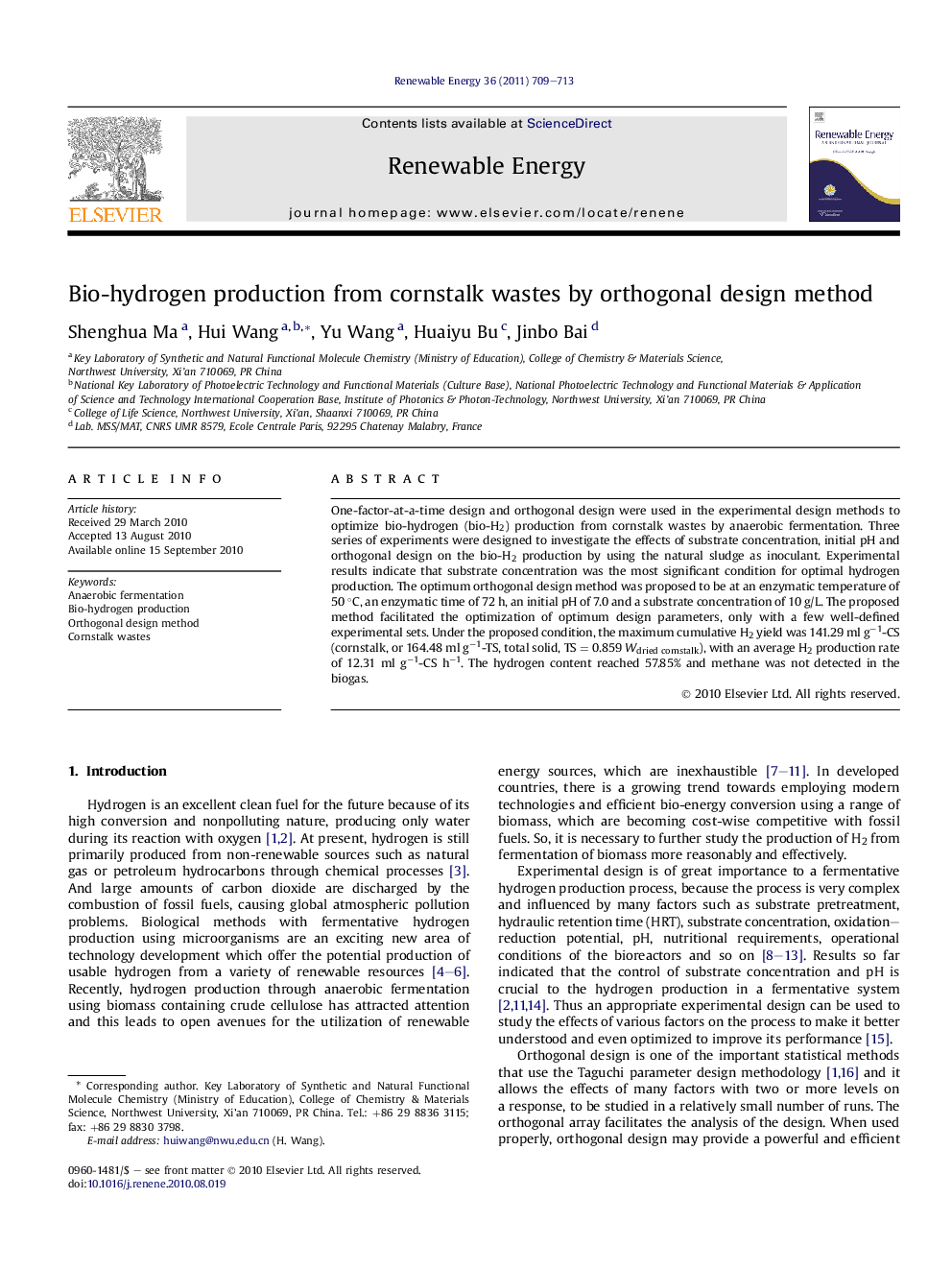| Article ID | Journal | Published Year | Pages | File Type |
|---|---|---|---|---|
| 301637 | Renewable Energy | 2011 | 5 Pages |
One-factor-at-a-time design and orthogonal design were used in the experimental design methods to optimize bio-hydrogen (bio-H2) production from cornstalk wastes by anaerobic fermentation. Three series of experiments were designed to investigate the effects of substrate concentration, initial pH and orthogonal design on the bio-H2 production by using the natural sludge as inoculant. Experimental results indicate that substrate concentration was the most significant condition for optimal hydrogen production. The optimum orthogonal design method was proposed to be at an enzymatic temperature of 50 °C, an enzymatic time of 72 h, an initial pH of 7.0 and a substrate concentration of 10 g/L. The proposed method facilitated the optimization of optimum design parameters, only with a few well-defined experimental sets. Under the proposed condition, the maximum cumulative H2 yield was 141.29 ml g−1-CS (cornstalk, or 164.48 ml g−1-TS, total solid, TS = 0.859 Wdried cornstalk), with an average H2 production rate of 12.31 ml g−1-CS h−1. The hydrogen content reached 57.85% and methane was not detected in the biogas.
